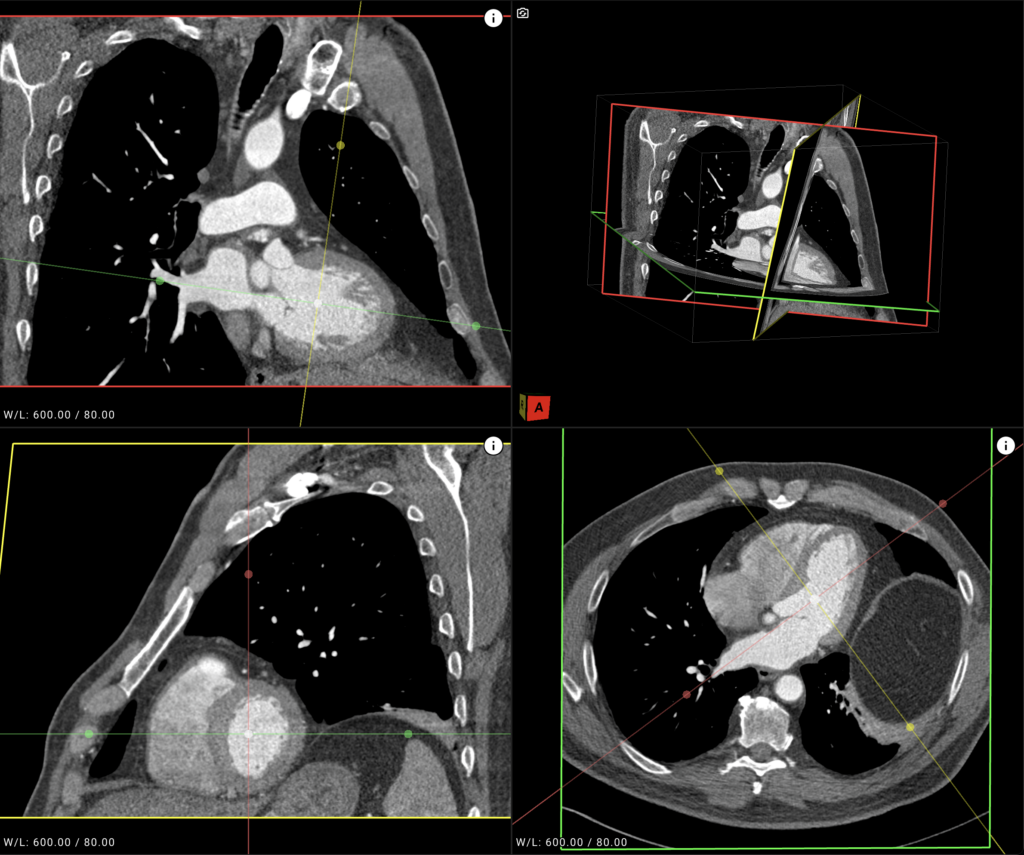VolView 4.2: Release Notes

We are pleased to announce the 4.2 release of VolView! Try it out now! To learn more about the previous 4.1 release, check out the 4.1 release blog post.
This VolView release focuses on integration with leading data management systems as well as infrastructure and GUI enhancements that lay the groundwork for upcoming major improvements in AR/VR/Holographic visualization, data streaming, annotation (including AI-assisted annotation), and DICOM support.
VolView is an open source permissively licensed radiological viewer developed for clinical professionals. With VolView, you can have a deeper visual understanding of your data through interactive, cinematic volume rendering and easily visualize your DICOM data in 3D. Since VolView runs in your browser, you don’t need to install software and your data stays securely on your machine.
VolView is one of several open-source visualization tools offered by Kitware. To learn more about the technologies that underpin VolView, check out vtk.js for web-based visualization and itk-wasm for image I/O and processing capabilities. These tools are used in 3D Slicer, ParaView, Glance OHIF, Osirix, and more, and we can help you use them in your products and processes. For more information, please contact us.
Integrations
VolView can be easily integrated with other platforms to provide drop-in visualization functionality for data repositories. We currently provide several integrations with external data providers to bring visualization capabilities to their platforms.
Google Cloud Storage (GCS) Buckets and Amazon S3 Buckets
VolView can load datasets from GCS and S3 buckets using the respective gcs:// and s3:// URLs. Simply point your VolView instance at a bucket URL and VolView will automatically (and recursively) fetch your datasets and display them for visualization. Learn more about this feature in VolView’s documentation.
Imaging Data Commons
Through a collaboration with the Imaging Data Commons (IDC), we now have VolView integrated with the IDC data portal. This feature will allow IDC users to click on a button to visualize their selected datasets in VolView! Not only does this allow users to seamlessly load IDC datasets into VolView, it incurs no egress costs for IDC as the data is pulled from Amazon’s Open Data initiative. You can try this out now in the IDC’s data portal.

Girder Data Management Platform
Developing medical AI models requires teams of expert annotators with access to large collections of images. Using the Girder VolView plugin, data science teams can collect annotations from radiologists using VolView’s integration with Girder. This plugin allows annotators to load Girder datasets, draw annotations in VolView, and then submit those annotations back to Girder for upstream analysis.
New Visualization Capabilities
Oblique MPR
Oblique MPR is now supported as a layout option in VolView! Powered by the vtk.js ResliceCursorWidget, this view provides a performant and intuitive means to reslice your volumetric images with ease.

WebXR for Holographic Displays (beta)
VolView currently has an in-beta capability for rendering to Looking Glass holographic displays. This feature provides you. To learn more about this integration, check out our previous blog post on rendering to holographic displays with vtk.js.
Expanded Annotation Infrastructure and Capabilities
VolView’s annotation features have gotten a major overhaul and improved presentation in this release. Internally, we made sweeping changes to the tool infrastructure to better support the addition of new tools in the future. Externally, we made the layout and organization of annotations more intuitive and easier to use. This includes the addition of customizable labels that can be used to easily categorize and organize your annotations.
Annotation Tools
Two new annotation tools have been added in this 4.2 release: the Rectangle and Polygon tools. The rectangles are useful for simple bounding box annotations, while the polygon tool is great for more fine-grained boundary annotations.
Annotation handling has been improved as well. Annotations can now be selected in each view using the Select tool, simplifying the process of identifying which in-view annotations correspond to entries in the annotation list. This provides easy bulk annotation management, such as hiding or deleting annotations.
Improved Segmentation Management
Painting and segmentation in VolView has been overhauled for this release. The workflow for editing labelmaps is now segmentation-oriented. You can now create your segmentation groups and add customizable segments for each group. Need to erase or delete certain segments? Each segment can be independently deleted without having to manually erase them.
Keyboard Shortcuts
Annotators can switch between the tools (paint, zoom, etc.) with a keypress. For a list of shortcuts, open the Settings or press ?.
DICOM Integration with Window/Level Presets
VolView now supports preset window/level settings through DICOM tags. Slice rendering now defaults to the DICOM window/level tags if present. Otherwise, you can choose from a list of modality-specific presets or pick a set of generic default window/level settings.
Start Using VolView Today
VolView was designed for versatility, it can be easily adapted to custom workflows and applications, without committing large amounts of time and money. If you find you would like help customizing VolView, Kitware offers commercial support services that can accelerate that process and incorporate many other medical image computing libraries such as MONAI for medical imaging AI. For more information, please contact our team.